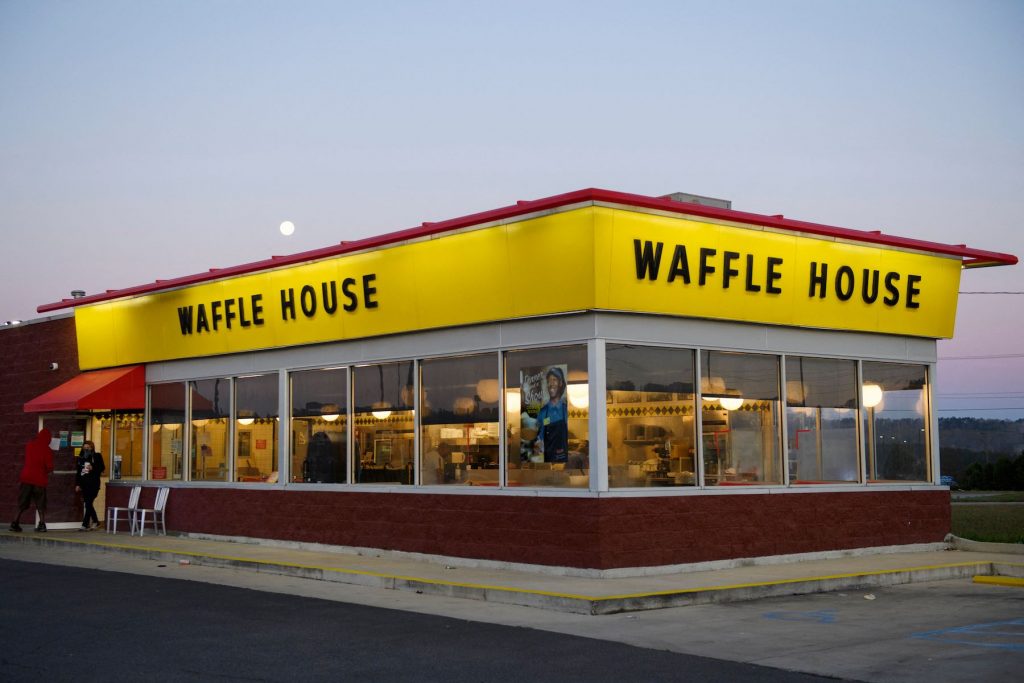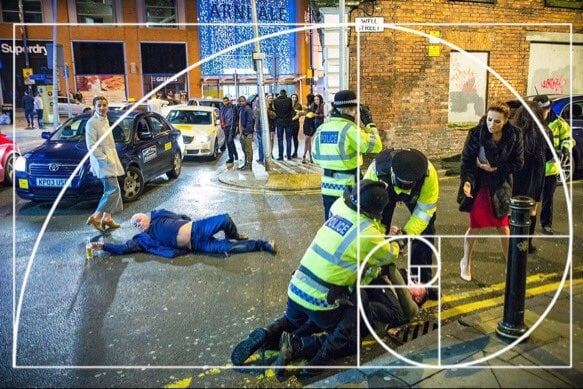Opinion
What’s the Deal With That Essay About How the ‘Waffle House Brawl’ Is Like an Edward Hopper Painting? Here’s My Guess
Viral culture is flattening everything into one incoherent mass.

Viral culture is flattening everything into one incoherent mass.

Ben Davis

For a hot second last week, the talk of the digital town square was the link between the “Waffle House Brawl” and beloved painter Edward Hopper. Or, really, the lack of connection between them.
“The Waffle House Brawl Belongs in a Museum” was the name of the essay that appeared in the lead position on the New York Times homepage last Monday. Multiple people sent me links to this piece. All had basically the same questions: “How was this published? What is this?”
The argument of the essay, in brief, is that a viral clip that showed a shambolic late-night battle at a Waffle House in Austin, Texas, which was shared widely with rubber-necking glee back in December (it’s actually footage from a few years ago), is somehow reminiscent of paintings in the Whitney Museum’s current “Edward Hopper’s New York” show.
That’s it. That’s the essay. It’s a head-scratcher. Edward Hopper is known for his scenes of picturesque desolation—something writer Niela Orr admits does not chime with the rowdy events of the “Waffle House Brawl” video, only to bring them together anyway.
But truthfully, the Hopper digression is just the cherry on top. “This belongs in a museum!” is a strange, queasy way to frame footage of actual people viscously beating each other.
The uproar over this article is a minor affair, though not totally innocuous. Tucker Carlson and the New York Post have been making hay with the video, interviewing Halie Booth a.k.a. “Waffle House Wendy,” the cook from the video who throws a sugar shaker at drunken guests who are harassing her, before deflecting a chair thrown at her head (an act the essay describes as “like an anime character deflecting a beam of supernatural power.”) Booth is white, the diners are Black, and clearly there’s a certain racist Fox News angle being pressed about all this, about hard-working white people under siege by Black criminality.
Turning the spotlight on the sensational viral clip, only to describe the violence in it as a kind of picturesque genre scene, doesn’t really do much to cut against the stereotype of out-of-touch liberal media.
Still, I have some compassion for the writer and editors here. The piece has the hallmarks of a rushed “smart take,” born of the imperative to hop on the traffic generated by a viral trend but also somehow meant to justify it to Times readers by giving it a gloss of social commentary and artistic legitimacy.
I think something like this article should probably itself be viewed through the lens of a workplace accident. If you make your living in a meat-packing plant, and they reduce safety checks and speed up the line, you are likely to lose a piece of your finger. If you make your living in online media, and they reduce editorial checks and speed up production, you are likely to lose a piece of your reputation.
That maybe explains what happened with this essay, but not why it happened in the way it happened. There is another thing going on in the “Waffle House Hopper” essay that is emblematic of a mutation in culture coverage in general.
The piece comes from a New York Times Magazine series called “Screenland,” whose tagline is “Making Sense of Viral Moments.” It has recently covered The White Lotus finale, hate watching Emily in Paris, and TikTok watch influencers. Once “what people are talking about online” becomes the lens through which everything is looked at, viral culture starts to recode how culture more broadly is approached.
The rules of a dominant mode of media tend to radiate out through all the other ones to determine how they are read. For instance: In a world where photography is the dominant visual medium, it is difficult to see paintings non-photographically. As Jennifer Roberts writes, “in any work of art there are details and orders and relationships that take time to perceive”—but, she emphasizes, it takes a conscious, even painful effort to slow down if you are to arrive at this way of seeing a painted work today. Viewers tend to scan them quickly for a central subject, and view the picture, in the manner of a photo, as an image that has been rendered instantaneously rather than built up over time, with every detail being the result of a conscious choice.
A few years ago, there was a brief social-media trend of taking works of photojournalism, overlaying them with a “Golden Spiral” diagram and declaring “This Looks Like a Renaissance Painting!” Art historian Rachel Wetzler saw this as representing how both photographic and painterly ways of looking were being recoded by the rules of digital culture.

Photo: Twitter/@GroenMNG
“Photographs and paintings are fundamentally different types of objects, but that distinction is literally flattened when viewed on a screen: this is the logic of the Google Image search grid, algorithmically sorting JPEGs on the basis of loose affinities between data points,” Wetzler wrote. “Likening every viral image to a Renaissance painting only makes sense when they are both perceived first and foremost as images untethered to material supports or different kinds of artistic labor.”
Something like that flattening is in the mix with the attempted “Baffle House Brawl = Hopper Painting” equation—but we’re also at an even further level. At least the #AccidentalRenaissance trend built off of a sense of design and visual structure within images.
At this point, it’s not just the digital image but viral culture that is the dominant force. The conversation around something looms larger than the thing itself. The image is a vehicle for takes and counter-takes and riffs as it circulates, and drained of its specificity in the process of being meme-ified.
That’s how you arrive at seeing a workplace assault as first of all some kind of spectacle to riff on, and only secondarily as an actual workplace assault. Or, for that matter, how Edward Hopper’s art is reduced to a jumble of incoherent signifiers, like the meta-data keyword tags you don’t see but that follow an image around the internet: “American life,” “restaurant scene,” “alienation,” “museum-worthy…”
In any case, culture coverage is steadily being taken over by the “Screenland” “decoding viral moments” model. To the extent that images gain tremendous force as they are sucked up into “the conversation,” it is something that is worth engaging with, and actually almost impossible not to engage with. I’m doing it now.
But to the extent that social commentary or art criticism both depend on being able to think about the specificity of an image outside of its condition as a meme, a lot depends on being able to push against these pressures as well.
That’s my answer to the question, “what is this?”